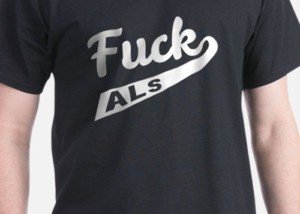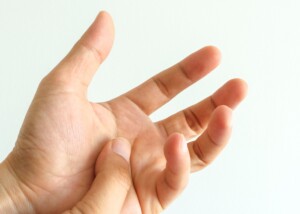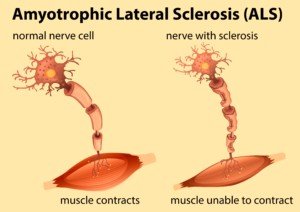
Ever wonder what strength tests for ALS that a healthy person could pass?
Here are strength tests for the lower and upper body: legs, arms, shoulders and hands.
As a fitness expert and former personal trainer, I’ve devised some strength tests that should put your mind at ease about ALS if you’ve been freaking that you might have this disease due to muscle twitching, muscle cramps or perceived weakness.
If you can perform all of these strength tests, then you’ll have much less fear that you have ALS.
If you’ve been spending hours every day doing strength tests for ALS, you can finally stop the obsession, because these strength tests I’m about to describe are official ALS strength tests given by physicians for neurological exams.
You can perform these ALS strength tests with or without a partner.
Before engaging in these strength tests, there’s a few things you should know.
“I think that self-assessment of strength is a tool that can be used to reassure in some cases,” begins Mitzi J. Williams, MD, clinical neurologist with Morehouse School of Medicine and clinical advisor for the Multiple Sclerosis Foundation.
“But it is a bit problematic for a few reasons,” continues Dr. Williams.
“It may be difficult to assess bilateral strength simultaneously for subtle differences (without someone else to assist.
“Strength can be mildly asymmetric if there was a previous injury or pain limiting movement (arthritis).
“With that being said, shoulder flexion and hip movement are definitely doable.
“Biceps resistance can be done manually or using a light weight. Wrist flexion may be a bit harder to assess at home.”
ALS Strength Test 1
Shoulder flexion 1. Raise both arms, keeping them straight, at the same time in front of yourself, palms down.
Partner applies resistance atop your forearms. Both arms should resist with equal strength. Exercise equivalent: shoulder frontal raises with dumbbells.
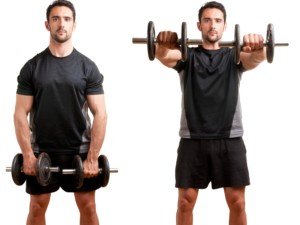
Shoulder flexion. Shutterstock/ruigsantos
ALS Strength Test 2
Shoulder flexion 2. Raise both arms at same time, palms up, arms straight, as if holding large pizza box. Close eyes and count to 10. Palms should remain up.
This sounds easy, but when ALS affects upper body, at least one arm will “drift” such that palm starts turning downward; forearm starts turning inward; and arm then drops.
Exercise equivalent: shoulder frontal dumbbell raises, holding dumbbells with palms facing ceiling.
ALS Strength Test 3
Biceps resistance. Position arm to 90 degree bend, upper arm vertical or almost vertical. Partner presses down on wrist, his hand atop your arm.
You resist by “curling” or bringing hand up towards shoulder.
Ability to do this should be equal in both arms. Exercise equivalent: Biceps curls with dumbbells or a barbell.

Biceps curl. Shutterstock/AXL
ALS Strength Test 4
Triceps resistance. Position arm as though raising a knife to stab someone; hand is about eye level.
Partner presses against your wrist from below it and you resist, pressing forearm downward. Strength should be equal in both arms.
(Keep in mind that it’s not uncommon for one arm to be a LITTLE stronger than the other.) Exercise equivalent: Triceps push-downs.

Triceps push-down
ALS Strength Test 5
Wrist flexion. Hold arm out straight, palm facing ceiling. Partner places his hand below yours and presses upward to bend your wrist. You resist.
Exercise equivalent: Dumbbell or barbell wrist flexion or “curls.”
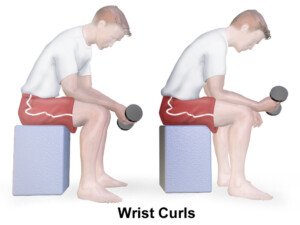
Source: BruceBlaus/CreativeCommona
ALS Strength Test 6
Grip. Partner stands before you. With your arms bent to about 90 degrees, grab partner’s fingers.
But grab only his index and middle fingers; completely grab them.
His arms are bent 90 degrees while you do this. He then tries to removed his fingers from your grip.
He should not be able to do this if you have healthy strength.
However, my own opinion, is that if the partner is strong, he just may be able to remove his fingers. I, personally, don’t believe that it’s a rule that the partner can’t remove his fingers. Exercise equivalent: hand grips.
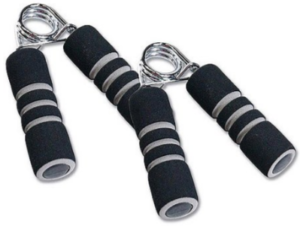
Hand grip device
ALS Strength Test 7
Hip flexion. Lie on floor, legs straight. Partner presses on one knee while you resist by raising leg.
Partner repeats with other knee. Strength should be equal; you should be able to resist.
Exercise equivalent: ball leg lift, though this requires strength in the core. “Out of shape” people will struggle with this.
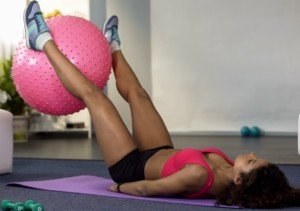
Hip flexion. Shutterstock/Motortion Films
ALS Strength Test 8
Hip extension. Lie on floor, legs straight. Partner presses upward against from beneath your thigh (hamstring). Exercise equivalent: Hip extension or “butt” machine; cable.

Hip extension. Shutterstock/vladee
ALS Strength Test 9
Hip adduction. Lie on floor, legs straight. Partner places hands on both inner thighs and tries to spread them out; you resist. Exercise equivalent: hip adduction machine.

Hip adductor or “inner thigh” machine. Shutterstock/The Vine Studios
ALS Strength Test 10
Knee extension. Lie and slightly bend one leg so that partner can support it beneath thigh (hamstring) while placing other hand atop calf.
Extend knee or kick out leg while he resists by pressing down on calf. Exercise equivalent: “leg extension” machine.
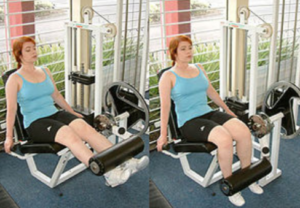
Leg/knee extension. Credit: George Stepanek
ALS Strength Test 11
Knee flexion. Same thing except partner places resisting hand beneath calf and tries to keep you from pressing downward. Exercise equivalent: seated leg curl machine.

Leg curl. Credit: George Stepanek
If you do well on these strength tests, you will worry less about ALS.
“It’s fine to do testing at home, but if there is concern, a person should make sure to be seen by a healthcare professional for formal assessment,” says Dr. Williams.

Dr. Williams is author of “MS Made Simple: The Essential Guide to Understanding Your Multiple Sclerosis Diagnosis,” available on Amazon. She is a member of the American Academy of Neurology.
 Lorra Garrick is a former personal trainer certified by the American Council on Exercise. At Bally Total Fitness she trained clients of all ages for fat loss, muscle building, fitness and improved health.
Lorra Garrick is a former personal trainer certified by the American Council on Exercise. At Bally Total Fitness she trained clients of all ages for fat loss, muscle building, fitness and improved health.


